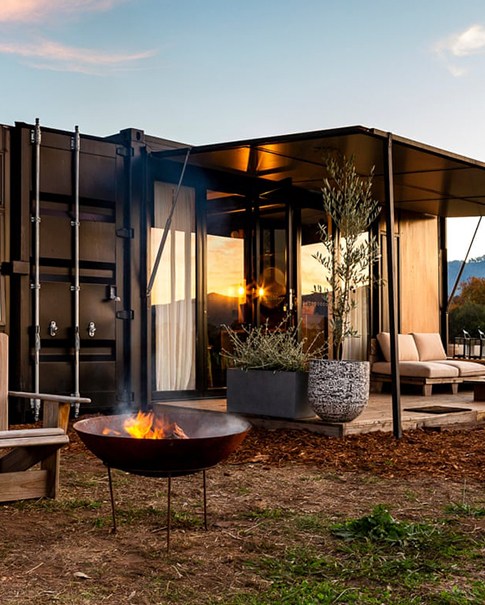Fundo
Em 2023, nossa empresa foi incumbida de fornecer casa pré-fabricada Soluções para um projeto de construção de aeroporto de grande porte na África Ocidental. O cliente, uma empresa multinacional de engenharia, precisava de uma solução de infraestrutura temporária, rápida e confiável para abrigar trabalhadores e dar suporte às instalações durante o desenvolvimento em várias fases. A primeira fase do projeto concentrou-se na instalação de acomodações para os trabalhadores, incluindo dormitórios, banheiros, chuveiros e um refeitório, com as fases subsequentes (II e III) planejadas para a construção do terminal e a expansão da pista.
Desafios
O projeto apresentou vários desafios únicos:
Prazos apertados: Os prazos de construção exigiam entrega e instalação rápidas para evitar atrasos.
Condições ambientais adversas:O local enfrentava calor extremo, tempestades de poeira e chuvas sazonais, exigindo estruturas duráveis e resistentes às intempéries.
Otimização de Espaço:O cliente precisava de um layout que maximizasse o espaço limitado do local e, ao mesmo tempo, garantisse a conformidade com os padrões de segurança e higiene.
Escalabilidade:Os projetos tiveram que acomodar a expansão futura entre fases sem interromper as operações em andamento.
Nossa Solução
Aproveitando nossa experiência em construção de casas pré-fabricadas, entregamos uma solução pronta para uso combinando design inovador, materiais de alta qualidade e planejamento meticuloso.
Design personalizado e planejamento de layout
Nossa equipe realizou uma avaliação no local para analisar o espaço disponível, a densidade de trabalhadores e os requisitos funcionais. Utilizando um software CAD, desenvolvemos um layout detalhado que segregava as áreas de estar, jantar e sanitários para otimizar o fluxo de trabalho e minimizar o congestionamento. Os principais recursos incluíam:
Dormitórios de trabalhadores: 40 unidades de casas pré-fabricadas, cada uma abrigando 8 trabalhadores, equipadas com sistemas de ventilação e paredes isoladas para conforto térmico.
Blocos de Saneamento: Banheiros e chuveiros centralizados com acessórios de economia de água e fossas sépticas adaptadas às limitações da infraestrutura local.
Refeitório: Uma estrutura espaçosa e aberta com cozinhas compactas e assentos para mais de 200 funcionários.
Durabilidade e Adaptabilidade
Todas as unidades foram construídas com estruturas de aço galvanizado, painéis sanduíche resistentes ao fogo e revestimentos anticorrosivos para resistir a climas rigorosos. O piso elevado evitou inundações durante as chuvas, enquanto os projetos modulares permitiram fácil reconfiguração em fases posteriores.
Suporte abrangente
Além de fornecer estruturas, fornecemos:
Manuais de instalação passo a passo: Desenhos CAD detalhados e renderizações 3D permitiram que a equipe do cliente instalasse as unidades com supervisão mínima.
Assistência Técnica Remota:Nossos engenheiros realizaram workshops virtuais para orientar a equipe no local durante a montagem e a solução de problemas.
Gestão Logística:Coordenamos o transporte marítimo e terrestre para garantir a entrega pontual, apesar das complexas cadeias de suprimentos.
Resultados e feedback do cliente
A Fase I foi concluída 15% antes do previsto, com o cliente elogiando a integração perfeita das nossas soluções ao seu fluxo de trabalho. Os destaques incluíram:
Melhoria do bem-estar dos trabalhadores: Dormitórios ventilados e instalações higiênicas aumentaram o moral e a produtividade.
Eficiência de custos: Unidades modulares reutilizáveis reduziram os custos iniciais em 20% em comparação à construção tradicional.
Design à prova do futuro: O layout reserva espaço para os serviços públicos da Fase II, simplificando a escalabilidade.
O gerente de projeto do cliente comentou: A precisão dos projetos e a capacidade de resposta a mudanças de última hora superaram nossas expectativas. A equipe não apenas entregou os edifícios, mas também criou uma parceria.
Olhando para o futuro
Com o sucesso da Fase I, fomos contratados para projetar instalações adicionais para as Fases II e III, incluindo complexos de escritórios e unidades de armazenamento de equipamentos. Este projeto reforça nossa capacidade de fornecer soluções modulares flexíveis e de alto desempenho em ambientes desafiadores, ao mesmo tempo em que cultivamos relacionamentos de longo prazo com os clientes.
Este projeto de aeroporto africano exemplifica como casas pré-fabricadas podem acelerar o desenvolvimento de infraestrutura sem comprometer a qualidade ou o bem-estar dos trabalhadores. Ao combinar expertise em engenharia com uma abordagem centrada no cliente, transformamos moradias temporárias em um ativo estratégico — que atende tanto às necessidades imediatas quanto ao crescimento futuro. À medida que a demanda global por infraestrutura rápida e sustentável cresce, nossas soluções continuam a preencher a lacuna entre a ambição e a realidade.

